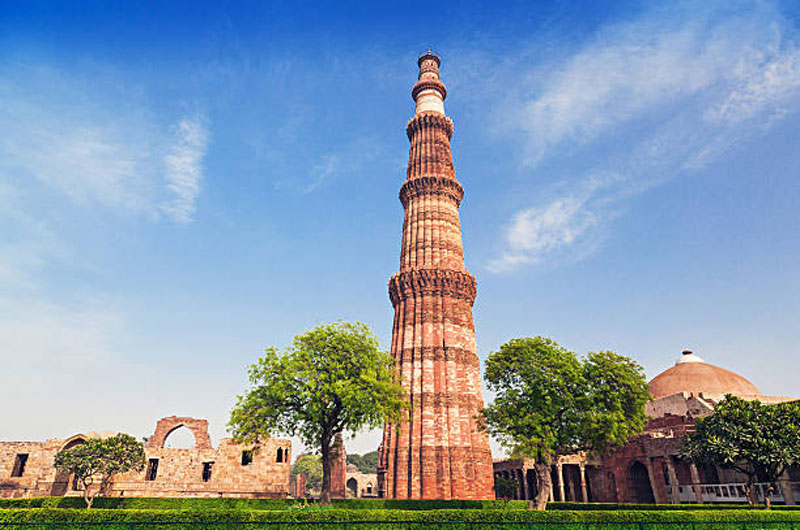
Qutub Minar: A World Heritage Site
The Qutub Minar, a UNESCO World Heritage Site, is an iconic historical monument located in Delhi, India. This towering minaret, which stands as a testament to the architectural brilliance of the early Delhi Sultanate, is one of the tallest minarets in the world made of bricks. The Qutub Minar complex, with its impressive structures and rich history, attracts millions of tourists every year, making it a significant cultural and historical landmark.
Historical Background
- Construction and Purpose
- Construction initiated by Qutb-ud-din Aibak in 1192.
- Completed by his successor, Iltutmish, in 1220.
- Built to celebrate Muslim dominance in Delhi after the defeat of the last Hindu kingdom.
- Architectural Influence
- Reflects Indo-Islamic architectural style.
- Influences from Afghan and Persian architecture.
Architectural Marvel
- Design and Structure
- Stands at 72.5 meters (238 feet) tall.
- Comprises five distinct storeys, each marked by a projecting balcony.
- First three storeys constructed with red sandstone, while the fourth and fifth are made of marble and sandstone.
- Intricate Carvings and Inscriptions
- Features intricate carvings and verses from the Quran.
- Architectural embellishments include geometric and floral patterns.
- Arabic inscriptions narrating the history of the Minar.
- Iron Pillar
- Located within the Qutub Minar complex.
- Noteworthy for its rust-resistant composition.
- Believed to have been erected by Chandragupta II in the 4th century.
Specialty of the Qutub Minar
- Tallest Brick Minaret
- Stands as the tallest brick minaret in the world.
- Symbol of architectural innovation and craftsmanship.
- Historical Significance
- Represents the establishment of Muslim rule in India.
- Site of several historical events and architectural additions by various rulers.
Tourism Aspects
- Visitor Experience
- Guided tours available in multiple languages.
- Informative displays and audio guides for self-paced exploration.
- Night illumination enhances the aesthetic appeal for evening visits.
- Nearby Attractions
- Quwwat-ul-Islam Mosque: The first mosque built in India, located within the complex.
- Alai Darwaza: A grand gateway built by Alauddin Khilji, showcasing intricate Islamic architecture.
- Alai Minar: An unfinished minaret intended to be twice the height of Qutub Minar by Alauddin Khilji.
- Events and Festivals
- Annual Qutub Festival: Celebrates the cultural heritage with music, dance, and performances by artists from across India.
Impact on Locality
- Economic Significance
- Major contributor to Delhi’s tourism revenue.
- Generates employment opportunities for local guides, vendors, and artisans.
- Cultural Influence
- Enhances community pride and identity.
- Promotes the preservation of local traditions and crafts.
Preservation and Challenges
- Conservation Efforts
- Managed by the Archaeological Survey of India (ASI).
- Regular maintenance and restoration work to preserve the monument’s integrity.
- Environmental Concerns
- Impact of urban pollution and environmental degradation.
- Measures to control air pollution and mitigate damage to the structure.
Conclusion
The Qutub Minar, with its towering presence and intricate architectural details, stands as a monumental symbol of India’s rich historical tapestry. As a UNESCO World Heritage Site, it not only draws tourists from around the globe but also underscores the architectural and cultural prowess of the early Delhi Sultanate. The ongoing efforts to preserve and protect this architectural marvel ensure that it continues to inspire awe and admiration for generations to come.
